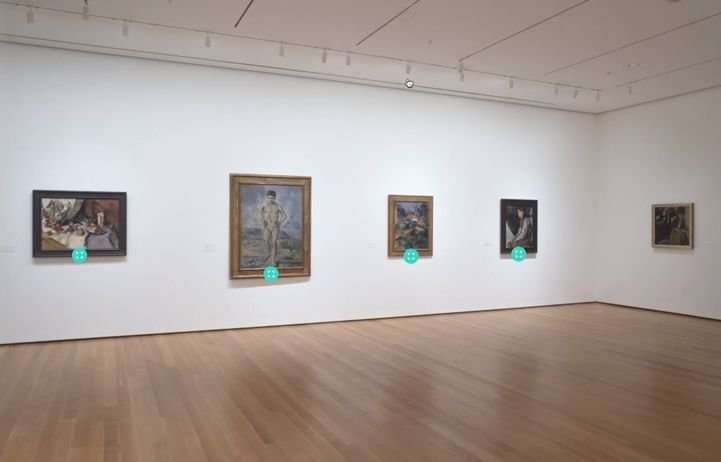March 13, 2018 weblog
Google and MOMA collaboration enlivens modern art connections

The Google Arts & Culture Lab in Paris is making news in the art world. They are on a mission to see how technology can help connect people with culture in new ways—reaching those who otherwise may not be able to see museum exhibits.
These technological advances also make it easier to learn about and appreciate art.
Their collaboration with the Museum of Modern Art in New York recently grabbed the spotlight.
The Google team unleashed its machine learning capabilities to find particular works of art as they have appeared over decades of exhibition, said Open Culture.
Now people will be able to click on certain pictures and find more information about them.
Freya Murray, creative lead, and other team members recently appeared in a video telling how the rich worlds of art, from paintings to sculpture to text-based art, can reach people who do not live within reach of museums such as MOMA.
Google's technologies helped MOMA launch some 30,000 images but they did not contain information about the actual works. So, the Google team turned to technology to transform the image repository into a searchable archive.
Damien Henry, experiments team lead, Google Arts & Culture Lab, tells the story of how Google got involved to identify MOMA art works through machine learning and the result.
"Starting with their first exhibition in 1929, The Museum of Modern Art in New York took photos of their exhibitions. While the photos documented important chapters of modern art, they lacked information about the works in them. To identify the art in the photos, one would have had to comb through 30,000 photos—a task that would take months even for the trained eye. The tool built in collaboration with MoMA did the work of automatically identifying artworks—27,000 of them—and helped turn this repository of photos into an interactive archive of MoMA's exhibitions."
A video about the collaboration noted that "The Art Recognizer" built in collaboration with the MoMA helps a person to recover details of past exhibits "in a snap of a finger."
"We had recently launched 30,000 installation images online, all the way back to 1929," said MoMA Digital Media Director, Shannon Darrough, in the video. The images, though, did not contain any information about the actual works in them.
MoMA's Digital Media team and the Google Arts & Culture Lab set out to face their challenge using machine learning and computer vision technology. Darrough said, "It was a nice collaboration between man and machine."
MOMA's collaborators at Google Arts & Culture Lab used an algorithm to comb through exhibition photos.
"Now a photo from a 1929 painting exhibition opens a window into an iconic work by Paul Cézanne; a 1965 shot of Robert Rauschenberg prints connects you to those same works in MoMA's 2017 Rauschenberg retrospective; and one corner of a 2013 design exhibition becomes a portal into poster art across two centuries. While hardly comprehensive, it's a great start—and a remarkable feat given the sheer volume of information involved."
Some interesting observations were made about the algorithm used.
"Google Arts & Culture Lab designed the algorithm to declare something a match only when it was very "confident." We learned that, like anyone, an algorithm has strengths and weaknesses. At present, the algorithm is very good at identifying static, two-dimensional images."
But, especially at a site like MOMA, static images hardly complete the magic. Far more challenging for the digital effort were sculptures; moving image, installation, and sound works; and text-based artworks.
Also, it was observed that "The algorithm may also incorrectly match photographs when the work on view was actually a different print of the same (or a very similar) image."
The museum site invited people to point out any error. "As this project has shown, technology provides us with quick and efficient tools, but it cannot replace human eyes and minds. (Well, not yet, anyway.) Despite a cautious approach that prioritized accuracy over quantity, we expect there will be a small number of errors. So if you notice something amiss, please let us know by emailing digital@moma.org."
Overall, however, Darrough said, "What I like about this experiment, and I give Google a lot of credit for this, is that it does not really feel like an experiment. It is actually integrated into our core platform so that millions of people can benefit from it. I can see this being used in many different places around the world."
"The experiments are designed to be explored either on the dedicated website, or via the Google Arts & Culture app, available for iOS and Android," said BT.com.
More information:
www.blog.google/topics/arts-cu … arning-meets-culture
www.moma.org/calendar/exhibiti … tory/identifying-art
© 2018 Tech Xplore




















